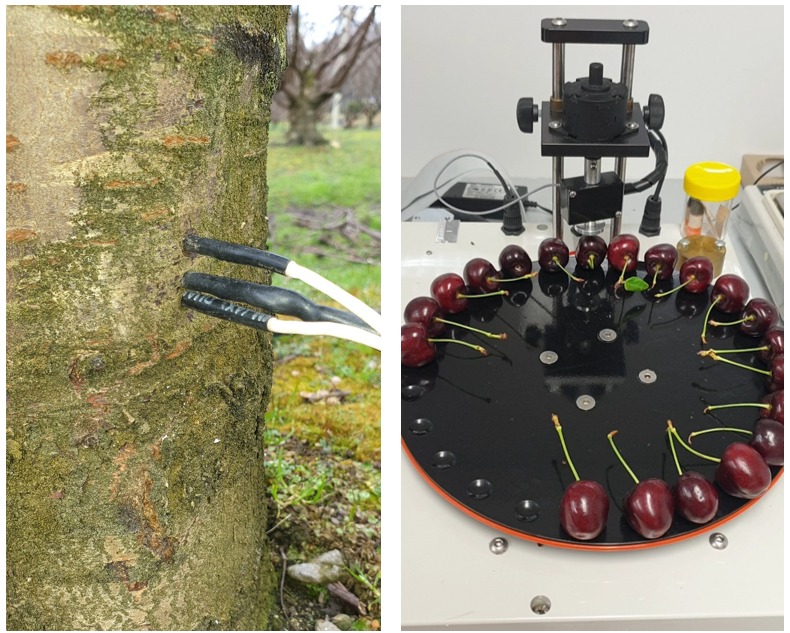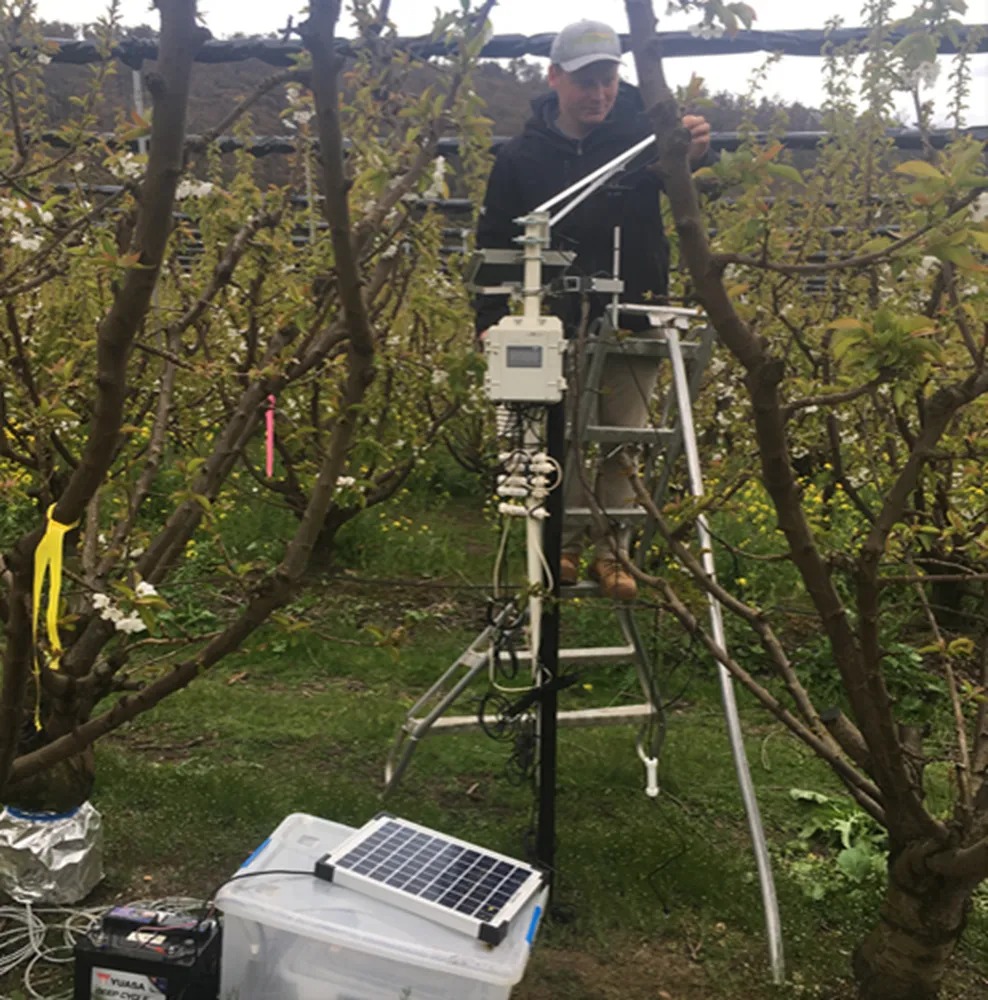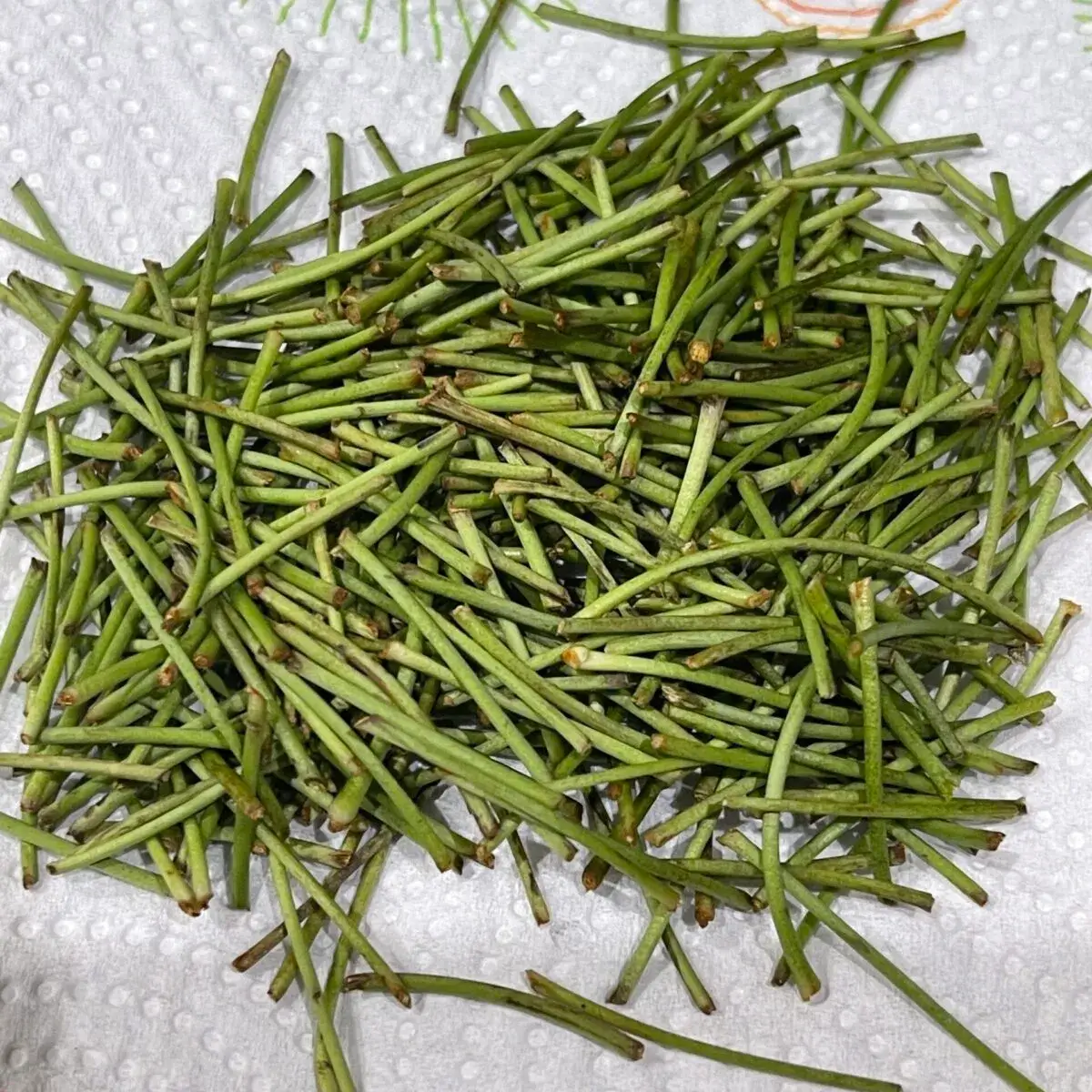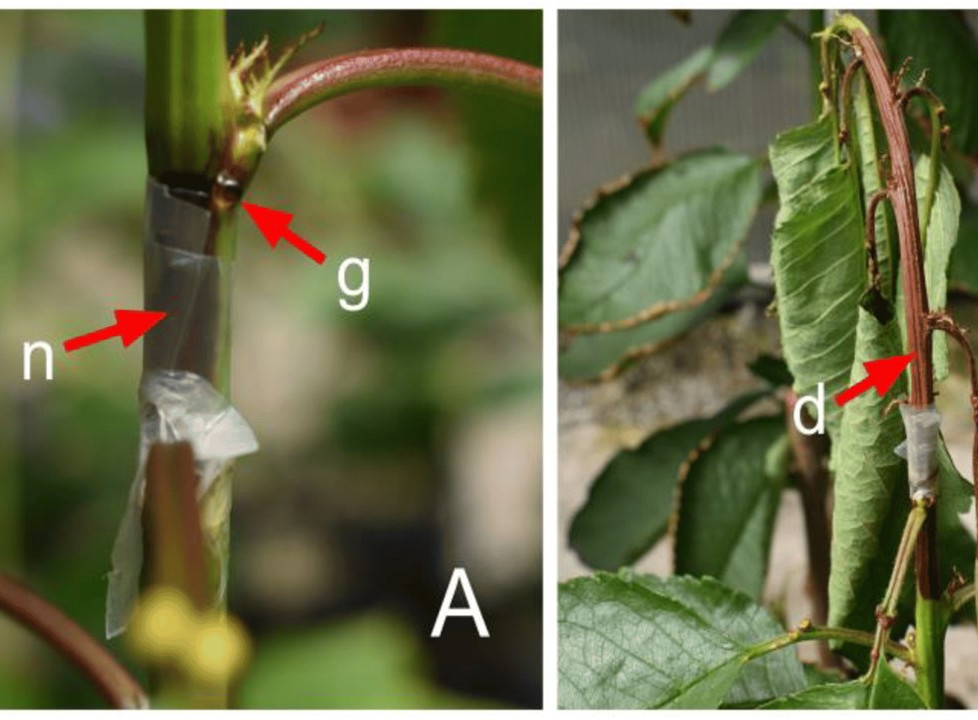Impact of rain covers on sweet cherry production
The risk of late season rainfall has led to significant industry investment in rain covers for sweet cherry production in Tasmania, Australia.
Due to concerns regarding potential loss of fruit firmness when temperature and humidity build up under rain covers, passive, ‘self-ventilating’ technology has been used.
Huon Valley study: rain covers vs. bird-netting
Our first study in the Huon Valley compared a rain-covered block with an adjacent bird-netting-only system using 14-year-old ‘Lapins’ on ‘Colt’ rootstock.
Fruit under rain covers was more mature at harvest: more colour development was associated with bigger (32 mm vs. 31 mm on average), sweeter (17.5 vs. 16.6 brix) fruit.
However, fruit was around 20 gmm⁻¹ less firm (e.g. 310 vs. 331 gmm⁻¹ for fruit from the second darkest colour bracket).
The obviously reduced air movement and increased humidity led to questions about tree and fruit water uptake.

Water uptake under rain covers
Using sap flow technology, we demonstrated that trees under rain covers had 70% less water uptake than trees from bird-net-only blocks.
This water uptake was very sensitive to light and temperature, as expected, but was also shown to drastically reduce once humidity rose above 60%.
In this study, a lack of fruit set did not allow for fruit quality analysis.
Derwent Valley trial: effect of rain cover boundary
We then set up a trial in the relatively cool Derwent Valley, investigating a gradient of distance from the edge of the rain cover boundary.
Surprisingly, we found lower air temperature close to the boundary, while temperature and humidity were similar within the block, and tree water use was not different.
However, brix (15.5 to 18.5) and firmness (250 to 345 gmm⁻¹) actually increased with distance from the boundary of the rain cover.
Overall conclusions from these studies
Microclimate stability under covers
- Reduced wind speeds
- Warmer (but moderate) temperatures and higher humidity
Water use under covers
- 70% less than in netted trees
- Fairly consistent at different locations
Fruit quality under covers
- Mature fruit was softer on a warmer site
- Fruit was firmer and sweeter at the cooler (Derwent Valley) site

Implications for nitrogen, calcium, and fruit firmness
We emphasise that reduced water uptake has important implications for nitrogen and calcium uptake and possibly fruit firmness.
Furthermore, we speculate that reduced firmness under rain covers may be a greater issue in growing regions or seasons with more extreme temperatures than those studied.
Source: Cameron H Stone, Dugald C Close, Sally A Bound, Tae Ocean
AgNova and University of Tasmania, Australia
Images: Dugald C Close, University of Tasmania, Australia
Cherry Times - All rights reserved














